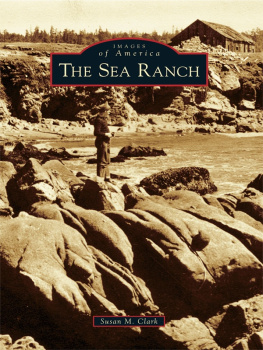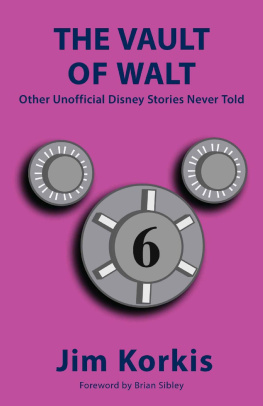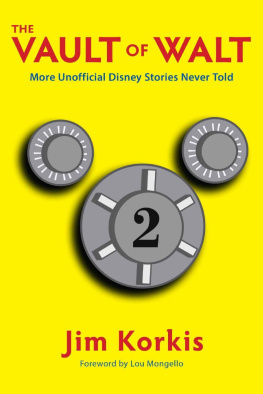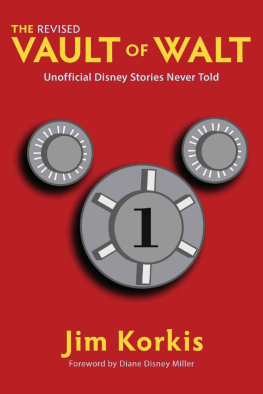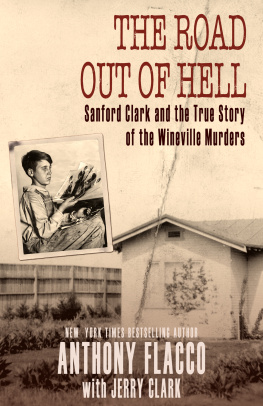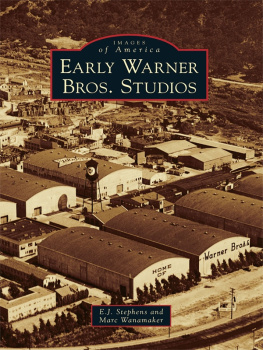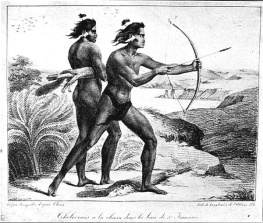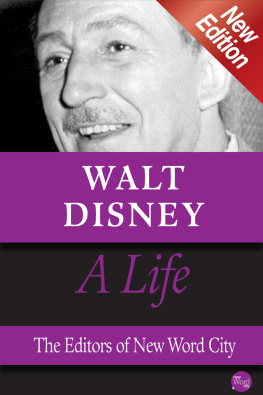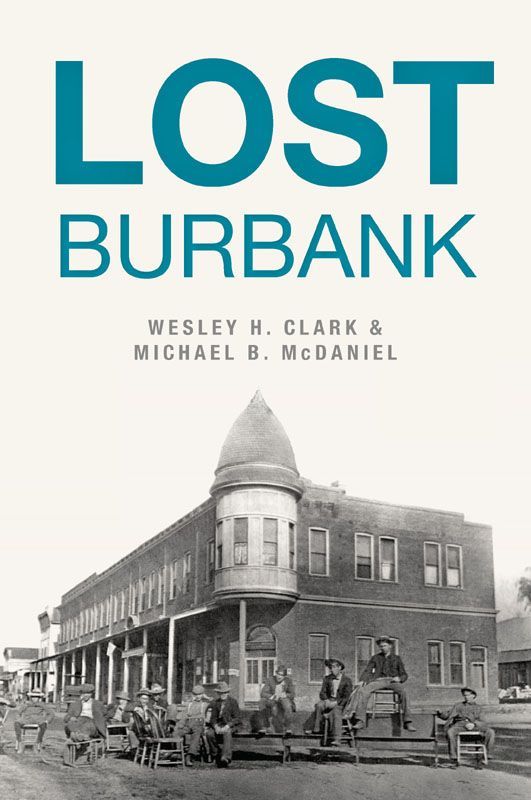

Published by The History Press
Charleston, SC
www.historypress.net
Copyright 2016 by Wesley H. Clark and Michael B. McDaniel
All rights reserved
Front cover: The Burbank Building on the corner of San Fernando Road and Olive Avenue, circa 1890. Burbank Historical Society .
First published 2016
e-book edition 2016
ISBN 978.1.62585.755.2
Library of Congress Control Number: 2016939304
print edition ISBN 978.1.46711.977.1
Notice : The information in this book is true and complete to the best of our knowledge. It is offered without guarantee on the part of the authors or The History Press. The authors and The History Press disclaim all liability in connection with the use of this book.
All rights reserved. No part of this book may be reproduced or transmitted in any form whatsoever without prior written permission from the publisher except in the case of brief quotations embodied in critical articles and reviews.
To our parents, who moved us to Burbank; and to our wives, who put up with our obsessions about the place .
CONTENTS
PREFACE
How, exactly, is Burbank, California, lost?
As a global media capital, it is easy to find. In fact, Burbank is, arguably, the media capital, as a lot of what gets billed as being from Hollywood is really from Burbank. You encounter it all the time in movies and television, either in front of or behind the camera. (Or, increasingly these days, on the computer or cellphone screen.) In fact, Burbank is rather hard to miss. In 2011, when the city celebrated the 100th anniversary of its incorporation, Mayor Jess Talamantes put a twist on the Las Vegas promotional slogan, What happens in Vegas, stays in Vegas: What happens in Burbank is seen globally.
Its important to note that Burbank is very much a part of the vibrant, ever-changing Southern California lifestyle, where fads, interests, hobbies and obsessions come and go with alarming rapidity. Slot-car racetracks give way to drinking-water bars, which give way to Internet cafs, which in turn give way to vape shops.
But that is really not the sort of thing were talking about in this book. Were primarily concerned with lost lorethe unique experiences and knowledge of everyday Burbankers that make Burbank Burbank . For instance, a housewife in wartime Burbank spoke of using some purloined Lockheed blueprints (printed on linen, a scarce material in the early 1940s), which she bleached, as material for a nice, soft pastel blue dress. Another example involved a conversation some years back, when Mike McDaniel casually noted to Wes Clark that an incident had recently occurred near Turkey Crossing. Where? Wes had spent fifteen years in Burbank, had attended Burbank schools and had worked there, but he was utterly unfamiliar with the location. And why does it have such a funny name? (As it turned out, Wes walked by the spot every day on his way home from school and later worked there as a Lockheed employee, but he was totally oblivious to the place-name or its funny history.)
All this and more shall be explained in the following pages.
Another question one might reasonably ask is, Why Burbank? What is it about a San Fernando Valley community that is special and deserving of a book-length treatment about its lore and history? After all, this is a place that has been (gently) ridiculed in the media for a half century by the likes of the writers of Rowan and Martins Laugh-In and The Tonight Show Starring Johnny Carson .
In a word, what makes Burbank special is Burbankers. And we are happy to introduce you to interesting Burbankers and their stories in this book. Some of them you may have heard of, but many you probably havent. After all, it is our sneaking suspicion that, despite the statue of Dr. David Burbank (dentist and landowner) that presides over a little traffic island at the well-traveled intersection of West Victory and West Burbank Boulevards, many Burbankers suppose that the city was named for Luther Burbank, a prominent botanist. The city fathers didnt help things by naming one of Burbanks junior high schools after the botanist instead of the dentist. Some of these Burbankers fought in wars and paid the ultimate price; they get a chapter of their own. Mike McDaniel has been a tireless chronicler of their identities and service with the citys veterans committee. And there are also Burbank places . These are, inevitably, associated with people, but the interesting spots in town get their own chapter.
And, it must be admitted, Burbank is a special place for the authors. On one car ride to a restaurant forty years ago, Wess parents said something disparaging about Burbank to Wes and Mike, sitting in the rear seat. We boys looked at each other and said, We like it here. Burbank is cool. Wess Brooklyn-raised father turned around and said, disbelievingly, Youre just saying that, right? Wouldnt you rather live somewhere else? No, we replied. Its hard to believe that teenage males in the 1970s didnt want to live in New York, Los Angeles or somewhere else more hip, but thats how we actually felt.
We liked Burbank then, and we still do. We want to share some of its odd history and lore with you, to discover whats lost and make it known again.
One last note: this is not a history book. It is, rather, a book of some history mixed with lore. If you seek a standard history of Burbank, we recommend A History of Burbank (1967), published by the Burbank Unified School District, or the Burbank Community Book (1944), by George Lynn Monroe. Those will likely give you what you seek. They can both be found on our Burbankia website at wesclark.com .
Enjoy!
WES CLARK AND MIKE MCDANIEL
Spring 2016

Martinosand Burbankslegendary tea cake. Martinos Bakery .
ACKNOWLEDGEMENTS
We thank Sue Baldaseroni, Penny Strickland Rivera, Betty Penrod and the other great folks at the Burbank Historical Society, who were kind enough to let us rummage through their files for hours in search of photographs, some of which are published here for the very first time in a book of Burbank history. We also thank Monte Thrasher, who lent many interesting tales to the Burbankia website; the Carson Entertainment Group for permission to reprint a 1981 poster; Greg Aliamo, who supplied his Vietnam photographs; the folks at the various Burbank Facebook groups who have been supportive and who have shared their stories with us; Richard Dixon, a skilled writer who contributed some fine pieces to Burbankias Burbankers Remember article; and Wes Clarks father-in-law, Don Bilyeu (BHS 45), who shared many tales of Burbank in the 1940s as well as his classy P-38 watch. Mickey De Palo of the Burbank Veterans Committee is a constant inspiration, and Doris Vick and Fermer Kellogg shared a lot of great information about the old days. From the Burbank library system, we thank Louise Paziak and Joan Cappocchi for their support. We think librarians are the unsung heroes of civilization and have spent many an hour enjoying Burbanks fine library system. Jeri Brown, Mindy Ladin and Irene Cabil from the citys records center have also been invaluable. During the writing of this book, Mary Jane Strickland, the Grand Lady of Burbank history and the founder of the Burbank Historical Society, passed away. She is greatly missed. Her dedicated daughter Penny, listed above, survives her and works at the historical society. Thanks also to Megan Laddusaw of The History Press, who saw a good thing with the Burbankia website and had the vision to turn it into a book.


